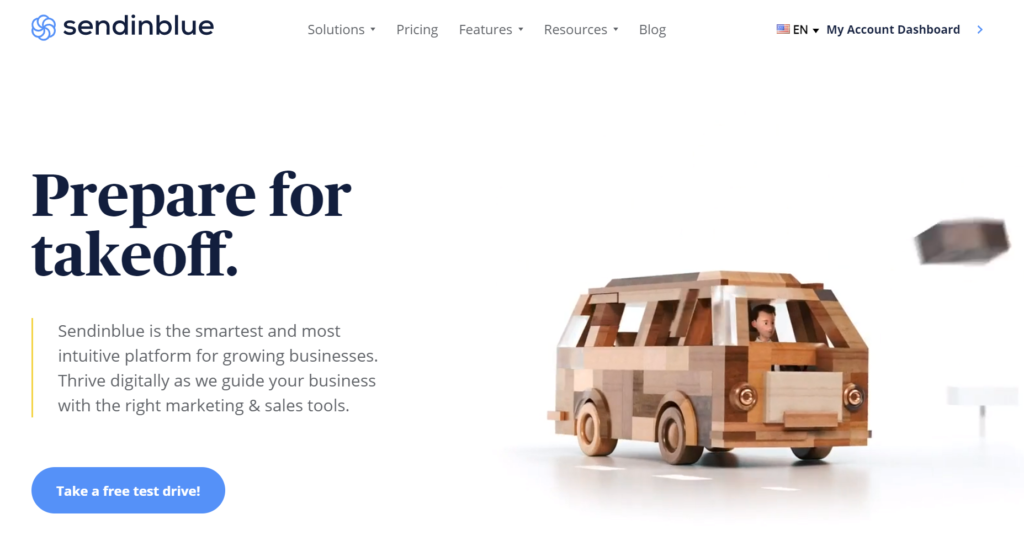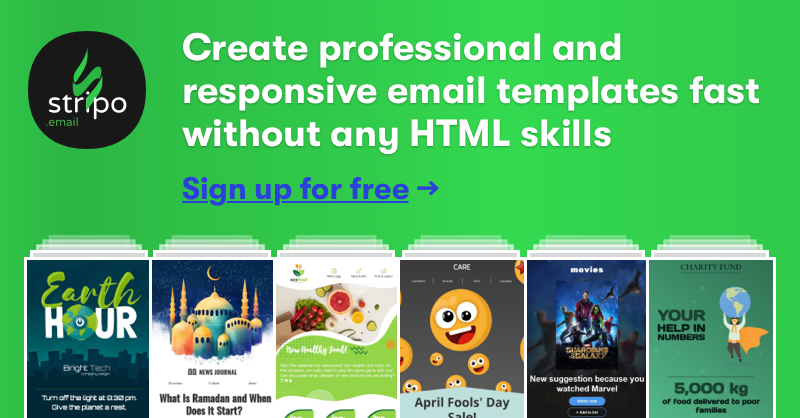If you run a website you know how difficult and expensive it can be to get visitors. From all the visitors you get, only around 30% return. In fact, anything about 30% is considered a good rate of returning visitors. There are several re-targeting you can do to bring users back, most of these methods are costly. That’s why an email newsletter is so important for every business. Email marketing itself is cheap, a newsletter is easy to put together and it’s a great way of getting subscribers to your website. In this article we will look at how you can create an effective email newsletter and discuss best practises.
Set your objectives
Spray and pray is not a good enough tactic. If you want the effort you put into creating an email newsletter to be worth it you need to know your end goal.
Decide what topics you want to discuss.
A newsletter must be informative, the content should be valuable to your subscribers so they keep an eye out for your emails.
What value does will you offer your subscribers?
Ask why they should open your emails? What can your subscribers get from your newsletters that they can’t get from your competitors. For example, if you run an online clothing store your email newsletter could consist of fashion tips. Your subscribers benefit from new ideas for their next night out!
How will you monetize your newsletter?
A newsletter is about building a relationship with your subscribers. Your real revenue generators should be your product promotions or sales emails. However, every business activity has a cost, including newsletters so you want some form of return. This is why you can go in for a soft sale with your newsletters. For example, if you run an online clothing when you share fashion tips include links to the products. If you run a marketing agency share tips on how to get more traffic. Show your subscribers how knowledgeable you are on a particular topic and entice them to book a call with your sales team.
Key metrics
Research industry average open and click rates so you can set yourself a target. Aim high but be realistic. Later in the article we will discuss how you can improve your key metrics.
Pick a sending domain
In order to send your emails you will need to have a sending domain. If you want to send emails from ‘hello@houdiniemails.com’ the part after the @ symbol is the domain. This will need to be setup. The part before the domain, you can change on the fly.
Picking the right domain
You might be tempted to use your websites domain. This is not recommended because of several reasons that require a separate blog but to keep it short, don’t use your websites domain to protect it from poor reputation.
In our case, instead of using ‘houdiniemails.com’ we would use ‘e.houdiniemails.com’. This is known as a sub domain.
Alternatively, we could go for ‘houdiniemails.net’. However, using a completely separate domain risks confusing your subscribers. Also, you shouldn’t use a brand new domain. For a domain to be trusted as a sender it needs to be at least 90 days old.
Setting up a domain
The setup process is very easy. You will need access to the domains DNS. The email marketing platform you use will ask you to update the DNS with a couple of records. The setup can vary depending on the platform you use but the general concept is the same. This process is referred to as ‘authentication’.
Certain platforms will allow you to send emails simply by verifying your email address and skipping the authentication part. I would advise against doing this. If you only verify your address your emails are less likely to reach inboxes.
By authenticating your domain, you build more trust with the likes of Gmail etc, because the email is then virtually ‘signed’. We will post a blog about this in more detail at some point but for now that is the sum of it.
Pick an Email Marketing Platform
In order to send email newsletters you need a platform that allows bulk email sends. These tools will come with email editors to create your templates, the ability to send the emails and extensive reporting on performance. Read our review of some of the top email marketing platforms here to find one that suits your needs.
Pick a platform that suits your businesses’ needs
If you are just starting off with email marketing you might want a platform that will provide you functionality you need to grow. For example, if you run an online store you might want to start off with a newsletter but work your way to cart abandonment emails.
A/B testing
The key to improving your email newsletter’s is running experiments. A/B testing is a form testing that involves creating multiple variants of the same email with one change. For example, testing two subjects line to see which one performs best. Find yourself a tool that allows A/B testing.
Start with a free trial
Most email marketing platforms now offer a free trial. Make use of this and have a play around before deciding on which one is right for you.
Editor
Unless you are experienced with HTML and CSS for emails, you want a drag and drop editor. Something that is easy to use and optimises your emails for mobile.
Need a recommendation?
Read our article about the top email marketing platforms to figure out which one is right for you. If you don’t have the time then here’s a quick recommendation. If you just want something cost effective and powerful go for Sendinblue.
The platform is easy to use, has good level of reporting and features included that will help you expand your email marketing.

How to build the actual email newsletter
An email newsletter is written in HTML and styled using CSS. Don’t worry if you are not familiar with either, you can always get in touch with us and we can do the work for you! Sadly, for us email marketing freelancers it’s easy to create an email newsletter nowadays. You can find free templates online or use drag and drop builders with zero experience.
Your email marketing platform
The platform you use for email marketing should have a built in drag and drop editor. Some platforms include free templates you can style yourself.
Stripo.email
Stripo is a tool that allows you to build email templates. It also integrates with several ESPs so you can build your email and port it across to your ESP in a couple of clicks.
The platform offers a huge range of templates and you can use it for free to a certain extent.

Substack.com
Substack is a free tool where you can create content and send it out to your subscriber list. The platform itself is free and you don’t need a website. You can upload your own list of subscribers or use Substack to get new subscribers.
An added benefit of Substack is that it will allow you to monetize your content. You can switch on a ‘paid subscriber’ feature.
There are several other email building tools but the above should suffice for now.
Create engaging content
It’s tough to keep subscribers engaged so the content you offer much be compelling enough for them to not unsubscribe. Here are a few tips to creating content that converts to clicks.
Keep it short
Keep your content short. Your newsletter should drive traffic to your website. You also don’t want to include too many articles or products. Subscribers don’t always scroll to the bottom of an email so keep it short. Another reason to keep your email newsletters short is that Gmail clips emails at 102KB. If your email is bigger in size (not including images) your subscribers will not see all of your content and you might also be unable to track opens.
Preference centre
It’s important to know what your subscribers are interested in. If you sell pet food and you send an email to your subscribers about cats you will only engage those who own a cat. Dog owners might not bother opening your emails again. That’s why it’s important to ask your subscribers what they want to hear about.
This can be done using a preference centre. A preference centre is a form that subscribers can fill out telling you what they might interested in. You can then use this information to segment your list and send targeted content.
Ideally, you want to ask these questions when someone subscribes. However, people’s preferences change, maybe your subscriber went out and bought a cat. That’s why, in addition to asking these questions at the time of sign up you should also offer a link to the preference centre in all of your emails.
You can build a preference centre using the forms option within your email marketing platform. If you need help, get in touch with us.
Get your subject line right
Your subject line is the first impression of your newsletter. It should be compelling enough to be picked over the other newsletters sitting in an inbox. Here are a few tips to create great subject lines:
Personalise the subject line. Mention the subscribers name. For example ‘John, here is a discount just for your next trip’
Create a sense of urgency. For example, if you’re running an offer set a deadline ‘20% off jeans ends today’
FOMO. The fear of missing out is real. No one wants to be left behind. Instill some FOMO in your subject line. For example, ‘The latest clothing trends in London’
Curiousity. Humans are curious creatures, asking a question in your subject line will make your subscribers curious. For example ‘Do you know what the fastest selling brand of toothpaste is?’
Tools. Tools like Subjectline.com can help you improve your subject line.
Stick to your branding
A newsletter should be a reflection of your brand and seem familiar. Make sure you use the same colours, logos and style. Even the tone you right your emails in should be consistent with your website.
Best practise for CTA’s
A CTA, or a ‘call to action’ is a button in your email that your subscribers will click on. This is what drives interaction with your email so it’s worth taking some time to get it right. Don’t give away everything your email otherwise you won’t know what people are interested in. Tease the subscribers with a snippet of your content to entice them into clicking on your CTA.
Above the fold. You can have more than one CTA in your email newsletters but be sure to include one ‘above the fold’. That means it’s visible on the screen when your email opens without the user having to scroll.
Size does matter. Most emails are opened on mobile devices nowadays which means users will click on links with their thumbs. That’s why your CTA should be big enough for a thumb to press without accidentally clicking the wrong link. Make sure your CTA has space around it and it’s big enough to press and big enough to stand out from the rest of the content. That’s why it’s useful to use buttons over text links.
Use the right colours. Make your CTA exciting and make sure it sticks out from the rest of the copy.
CTA text. Try and be creative and avoid using ‘Click here’. The text should be short and more descriptive, like ‘Activate offer’ or ‘Download for Free’.
Use a balance of images
Subscribers don’t spend a lot of time reading emails, on average they spend about 11 seconds. That’s not a lot of time to read long paragraphs. That’s why you need good images. However, if your email is full of images you might get caught in spam filters. That’s why you need to find a balance of text and images.
Keep them relevant. As they say, a picture says a thousand words. You want yours to say the right words. Make sure your images match your content. You can find plenty of royalty images on websites like Unsplash.
Break up content with images. Use your images to separate different articles.
Add links to your images. Subscribers are likely to assume your images have links on them and they are likely to press them. If they don’t go anywhere you have just missed out on some clicks.
Add alt text to your images. Alt text is what appears when images are not loading. This helps describe images when they are blocked and increases the amount of text you have in your emails.
Test images on mobile. You should always test your email newsletters and not rely on previews. Images can look very different on mobile so make sure you test on mobiles and make sure an image isn’t taking up all of your space.
Include an unsubscribe link
Don’t hide your unsubscribe link. Letting people unsubscribe will keep your list clean of non-engagers and the less non-engagers you have the better your sending reputation. Also, you want people to unsubscribe rather than marking your emails as spam, as the latter will hurt your reputation.
Sending time
Experiment with your sending time. Try different days and different times but once you find the optimal time, stick with it. That’s because subscribers will get used to receiving your newsletters and if you set a date and time they will know when to check for it.
Socials
Make sure to include your social channels. Try and be a bit more creative then just placing icons in your footer. Using your newsletters to drive social media engagement will mean you have another way of targeting potential customers. Try sharing an Instagram post in your newsletter.

Metrics to monitor
Sending emails is half the battle. The other half is optimising your email newsletters based on the results you get. Here are a few metrics you should monitor.
Open rate
Take your open rates with a pinch of salt. Nowadays this data can be inaccurate. That’s because Apple Mail now offers Mail Privacy Protection. This means Apple will prevent the sharing of opens and instead of blocking it completely it will register false opens. That being said, you want to aim for an open rate of 20% or above.
Click rate
This is the percentage of people that clicked your email after opening it. This will drive traffic to your website. If you are looking for leads, consider anyone that clicked as ‘warm’ lead. Segment these users and target them with more emails.
Topics being clicked
Unlike the first two, this metric is not included in your reporting. It’s something you should look at manually, keep a record of how many clicks you get on different topics so you can keep improving the content of your email newsletter.
How far down the email do subscribers click
If the last article in your email newsletter isn’t getting clicked it means your emails are too long. If you’re seeing a lot of clicks maybe you can increase the length of your newsletter.
Unsubscribes and spam complaints
Spam complaints are people marking your email as junk. If you exceed a complaint rate of 0.1% you might get penalised by the likes of Gmail etc. If you are seeing a high complaint rate, have a look at how you gathered your list. Our article about building engaged lists can help you on this topic.
Number of opens per hour
Most of your opens should happen in the first hour. That’s why you should keep an eye on opens per hour, if you are seeing more opens in the second or third hour then change your sending time accordingly.
Test, test, test
Once you have sent a couple of newsletters and have an idea of your open and click rates, start running experiments. Your email marketing platform should have a built A/B testing tool. Here are a few tests you should run.
From name
Try different from names. Compare how many opens you get by using a generic company name versus a real person.
Subject line
Try different subject lines for your email newsletter. One of the firsts test to run is using an emoji.
Content
Try different variations of your content. Maybe start by testing your header image. Test the number of articles you include, different footers and different colours.
Conclusion
Every business should be sending email newsletters. Getting started is easy, all you need is an email marketing platform and a domain. You build mobile optimised templates using a drag and drop editor. Always remember to monitor your results and use that data to make continuous improvements.

